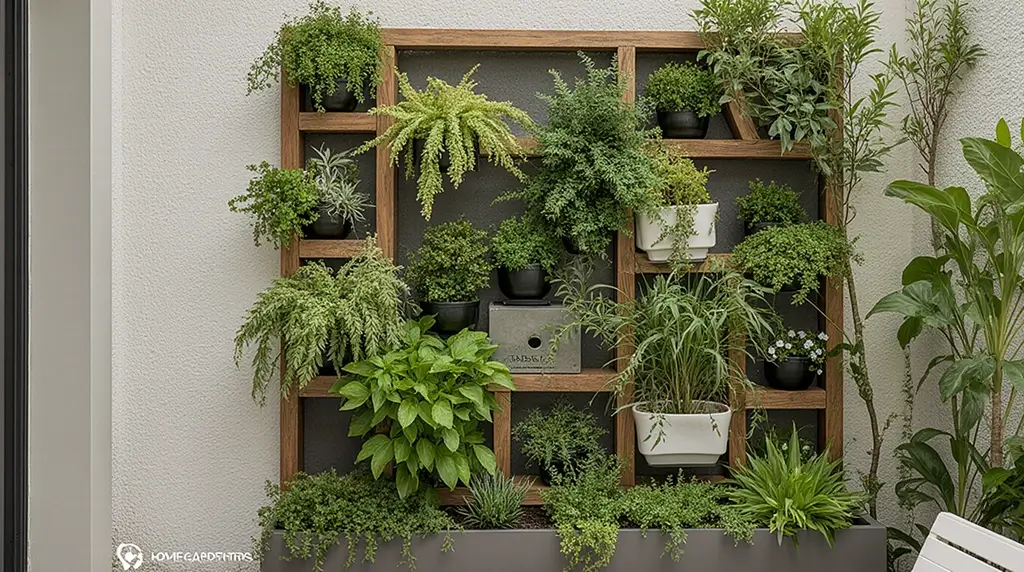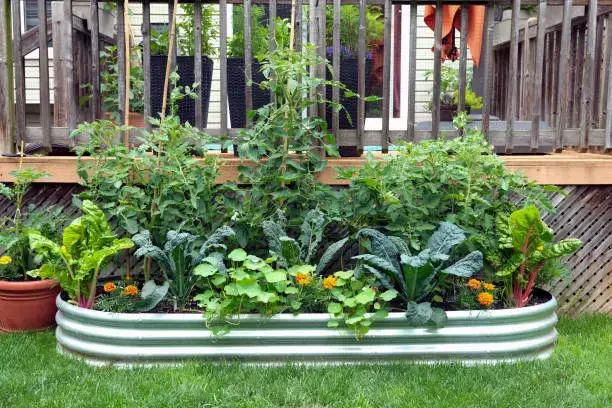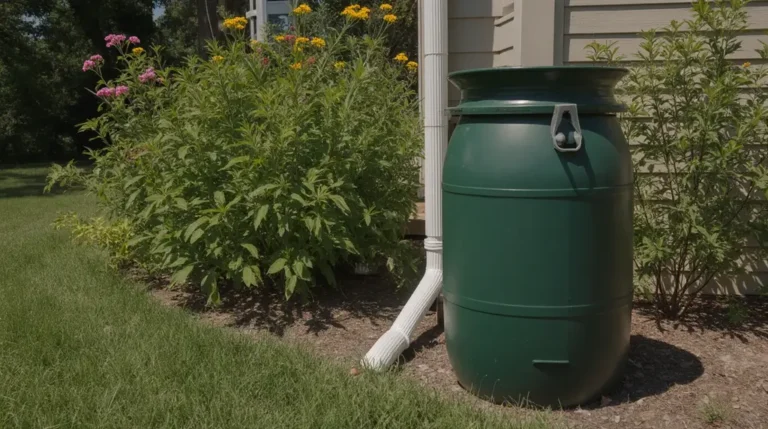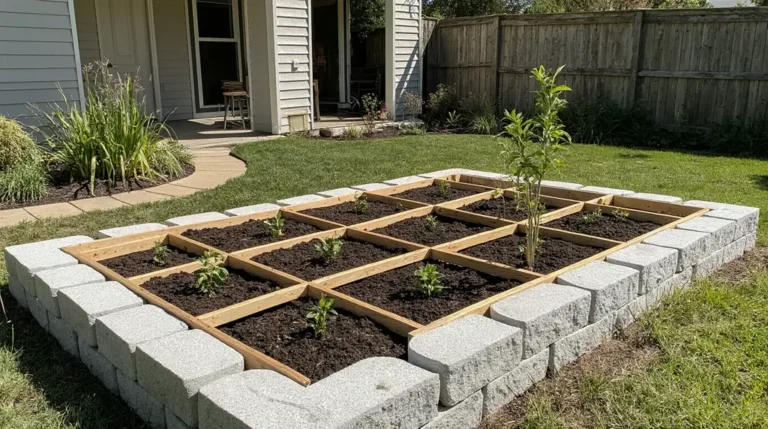DIY Vertical Garden Ideas for Small Spaces now
Table of Contents
Introduction: Unlock Your Garden’s Vertical Potential
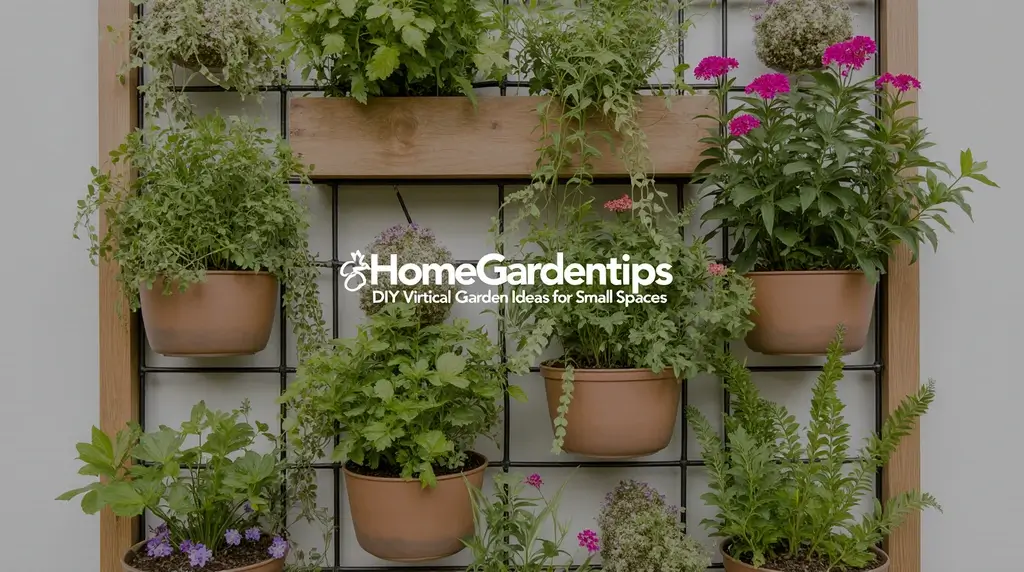
Imagine transforming your tiny balcony, bare wall, or small patio into a lush, vibrant garden oasis. With DIY vertical garden techniques, this dream becomes an achievable reality, regardless of your space limitations. Whether you’re dealing with a cramped urban apartment or simply want to maximize your gardening potential, vertical gardening offers an innovative solution that grows up instead of out. Make your DIY projects easier and more fun with our selected products – discover them here!
Vertical gardening is an efficient method that utilizes vertical surfaces like fences, walls, and windowsills to create stunning DIY plant wall displays. Build a Raised Garden Bed on a Budget; This comprehensive guide will walk you through everything you need to know about small space gardening, from inspiring design ideas and detailed construction tutorials to crucial safety considerations and optimal plant selection strategies.
The benefits of vertical gardening extend far beyond space efficiency. You’ll discover how to create space-saving solutions perfect for balconies and decks, transform plain walls into stunning zen-like features, improve air quality while boosting mental well-being, increase crop yields through upward growth, and establish natural privacy screens that obscure unsightly views.
Section 1: Why Go Vertical? Deeper Dive into the Advantages
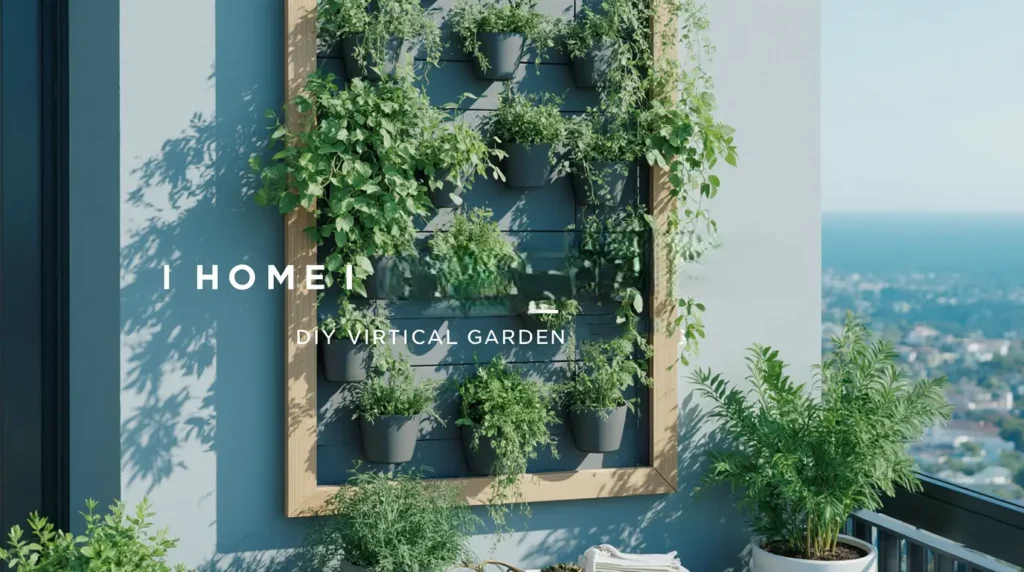
Maximizing Small Spaces
Small space gardening through vertical designs allows you to dramatically increase your plant capacity where horizontal space is at a premium. Instead of being limited by floor area, vertical gardens utilize wall space, creating multi-level growing environments that can accommodate dozens of plants in the footprint of just a few traditional containers.
Transforming Outdoor & Indoor Aesthetics
Vertical gardens create captivating visual interest and serve as living focal points. Whether you choose cascading flowering plants, structured climbing vegetables, or artistic succulent arrangements, these DIY plant wall installations transform ordinary spaces into extraordinary green sanctuaries.
Health & Environmental Benefits
Plants naturally filter air pollutants, making indoor and outdoor environments healthier. The therapeutic benefits of gardening—including stress reduction and improved mental health—are amplified when your garden becomes a prominent visual feature. Research consistently shows that regular interaction with plants reduces cortisol levels and promotes overall well-being.
Increased Accessibility & Yields
Vertical gardens position plants at various heights, making harvesting herbs and vegetables more convenient. Climbing plants like beans and squash can produce significantly higher yields per square foot compared to traditional horizontal growing methods.
Problem Solving Applications
Strategic vertical gardening can hide unsightly HVAC units, create natural privacy screens, define outdoor spaces, and add green barriers between properties—all while maintaining maximum growing potential.
Section 2: Inspiring Vertical Garden Ideas for Every Home
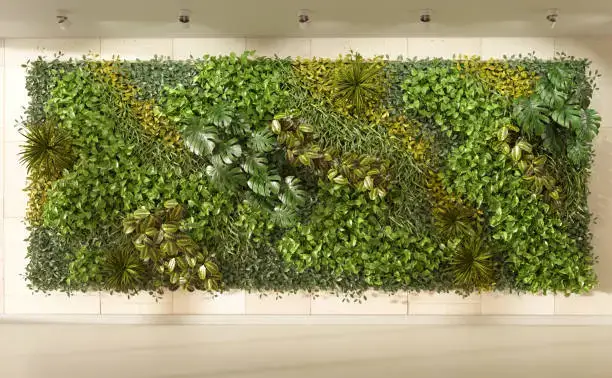
2.1 Wall-Mounted Wonders
Green Walls (Living Walls) Modular systems with integrated irrigation create stunning DIY plant wall displays suitable for wide varieties of flowering plants. These systems require careful planning for maintenance access and reliable watering solutions, but offer professional-looking results.
Pocket Planters Fabric planters work excellently for herbs, shallow-rooted vegetables, and bedding plants. Consider recycled denim for eco-friendly options, but avoid plastic shoe holders for edible plants due to potential chemical concerns.
Reclaimed Wood Slab Gardens Create rustic charm by mounting wooden slabs with metal hangers for terracotta pots. This DIY vertical garden approach offers excellent drainage and visual appeal, though weight considerations are crucial for wall-mounted installations.
Gutter Gardens Repurposed guttering provides perfect containers for salads, annual herbs, and alpine strawberries. Always drill adequate drainage holes and exercise caution with older gutters that may contain lead-based paint.
Repurposed Container Displays
- Tin Cans: Create colorful, budget-friendly displays with proper drainage, though they will eventually rust
- Plastic Bottles: Milk bottles (SPI #2 HDPE) work well for decorative and edible plants, but avoid recycled water bottles for food crops due to sun exposure concerns
- Shelving Units: Maximize vertical growing capacity by creating tiered container displays
2.2 Freestanding & Support Structures
Tiered Stands & Plant Ladders Perfect for balconies and patios, these structures display multiple containers in space-efficient tiers. Soften structural lines with trailing plants for enhanced visual appeal.
Obelisks, Wigwams & Pergolas Train climbing plants like sweet peas to create height, add color, and establish natural screens or garden dividers.
DIY Post & Wire Systems Build robust frameworks using 4×4 pressure-treated posts, galvanized wire, and turnbuckles. This small space gardening solution requires proper foundation work with concrete footings and cross-bracing to handle wire tension.
Pallet Gardens While popular, exercise extreme caution with treated wood pallets. Never plant edibles directly into treated lumber due to chemical leaching risks.
2.3 Integrated Garden Features
Wall Crevice Plantings Fill gaps in stone or brick walls with succulents, sedums, houseleeks, and rock cress for naturalistic vertical gardens that require minimal maintenance.
Fan-Trained Fruit Maximize productive growing on south or southwest-facing walls with apples, pears, plums, cherries, and figs. Gooseberries tolerate north-facing exposures.
Evergreen Climbers Star jasmine, Clematis cirrhosa, and ivy provide year-round interest, natural privacy screening, and structural softening effects.
Section 3: Designing Your Vertical Garden: Smart Planning for Success
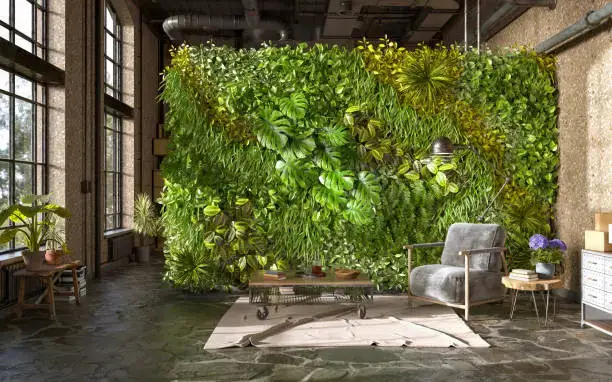
Site Assessment Essentials
Sunlight Analysis Carefully evaluate daily sun exposure patterns. Full-sun plants require 6+ hours of direct sunlight, while shade-tolerant varieties thrive with 2-4 hours. Indoor installations need adequate artificial lighting or bright indirect natural light.
Structural Evaluation Wall-mounted DIY vertical garden systems can become surprisingly heavy. Brick walls generally support more weight than mortar, and freestanding structures may be necessary for heavy installations.
Drainage Planning Plan water runoff carefully to avoid damage to surfaces below. Solid balcony floors require strategic drainage solutions to prevent standing water issues.
Material Selection & Durability
Choose untreated cedar for food-producing plants, galvanized or high-quality plastic containers to prevent rust, and stainless steel hardware for weather resistance. Proper material selection ensures your DIY plant wall remains attractive and functional for years.
Section 4: DIY Vertical Garden Construction: Step-by-Step Excellence
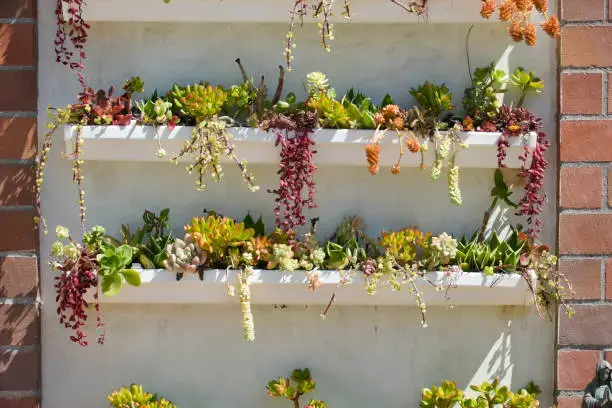
4.1 Essential Tools & Materials
Hand Tools: Shovel, post-hole digger, hammer, screws, drill bits, level, measuring tape, sandpaper, clamps Power Tools: Drill with hammer setting, circular or miter saw Materials: 4×4 pressure-treated posts, concrete mix, galvanized wire, turnbuckles, appropriate anchors, containers with drainage
4.2 Construction Principles
Foundation Work Dig post holes at least 2 feet deep for freestanding structures. Use concrete for stability and allow proper curing time before proceeding.
Wall Anchoring Specifics Always drill into brick rather than mortar for maximum holding power. Use appropriate masonry bits and wall plugs rated for your anticipated weight loads.
Assembly Process Pre-drill holes to prevent wood splitting, use galvanized screws for longevity, and ensure proper wire tensioning with turnbuckles for structural integrity.
Section 5: Choosing & Planting for Your Vertical Garden
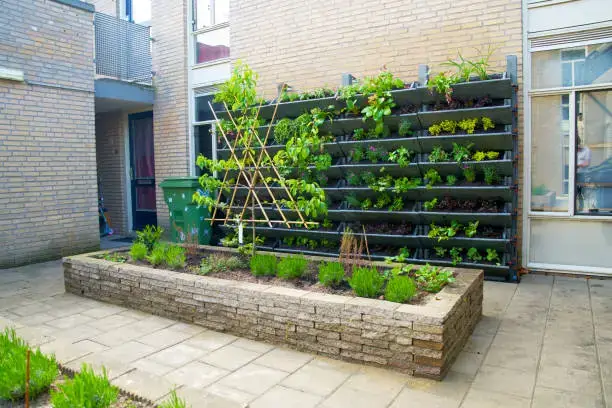
5.1 Plant Selection Principles
Successful small space gardening requires plants with compact growth habits, reasonable drought tolerance, and root systems appropriate for container growing. Consider seasonal interest, weight limitations, and sunlight requirements when making selections.
5.2 Top Plant Recommendations
Herbs: Thyme, oregano, chives, basil, cilantro, parsley—perfect for kitchen DIY plant wall installations Vegetables: Cut-and-come-again salads, alpine strawberries, climbing beans, compact squash varieties Ornamentals: Sweet peas, pansies, trailing geraniums, Boston ferns, English ivy Succulents: Houseleeks, sedums, rock cress for low-maintenance vertical displays
5.3 Planting Best Practices
Use high-quality potting soil with good drainage characteristics. Add vermiculite to improve drainage in vertical containers where water retention can become problematic. Consider slow-release fertilizers for consistent nutrition.
Section 6: Caring for Your Vertical Garden
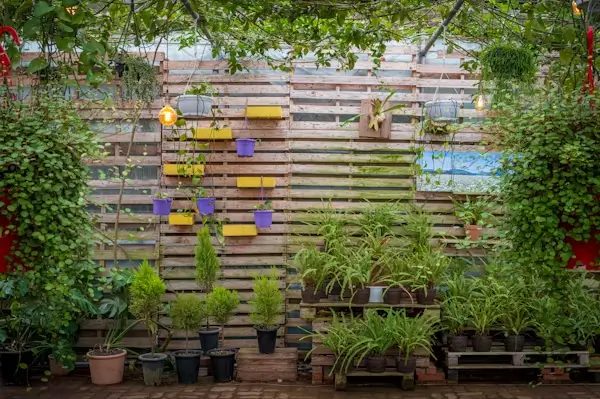
Watering Strategies
Vertical containers dry out faster than traditional gardens. Check soil moisture 3-5 times weekly, focusing on container edges where drying occurs first. Consider drip irrigation systems for larger installations or top-mounted reservoir systems for consistent moisture delivery.
Maintenance Requirements
Regular pruning and deadheading keep plants healthy and attractive. Remove dead foliage promptly to prevent pest and disease issues. Seasonal adjustments may include protecting plants during extreme weather or relocating containers as needed.
Section 7: Safety First: Critical Considerations
7.1 Material Safety for Edible Plants
Never use treated lumber or unknown recycled materials for food crops. Stick with food-safe containers like HDPE plastic (recycling code #2) or untreated cedar. Avoid plastic shoe organizers and old PVC pipes where chemical composition is uncertain.
7.2 Structural Integrity
Calculate total weight including saturated soil (approximately 110 pounds per cubic foot). Ensure adequate support systems with appropriate anchors, cross-bracing, and safety margins for wind loads and plant growth over time.
7.3 Drainage & Water Management
Proper drainage prevents root rot and structural damage. Plan drainage pathways to avoid water damage to buildings or surfaces below your DIY vertical garden.
Section 8: Beyond the Basics: Advanced Tips & Creative Flair
Indoor Applications
Kitchen herb walls bring fresh flavors within arm’s reach while creating attractive living décor. Consider low-light tolerant plants like pothos, snake plants, and ZZ plants for areas with limited natural light.
Seasonal Interest
Plan plant combinations for extended flowering periods. Mix early, mid, and late-season bloomers to maintain color and interest throughout growing seasons.
Creative Material Use
Embrace “junkin’ style” gardening with creatively repurposed materials like vintage tin cans, weathered wooden crates, or architectural salvage pieces that add character while serving functional growing purposes.
Conclusion: Embrace the Vertical Revolution
DIY vertical garden projects offer unlimited potential for transforming small spaces into productive, beautiful growing environments. Whether you’re seeking fresh herbs for your kitchen, privacy screening for your balcony, or simply want to bring more green into your daily environment, vertical gardening techniques provide practical solutions that maximize both space and visual impact.
The combination of space efficiency, aesthetic enhancement, health benefits, and increased yields makes small space gardening through vertical methods an ideal choice for modern gardeners. Start with simple projects like herb containers or trailing planters, then expand your skills and installations as you gain experience and confidence.
Your DIY plant wall journey begins with a single step—or in this case, a single planted container. Transform your space, enjoy the therapeutic benefits of gardening, and discover the satisfaction of growing up rather than out. The vertical gardening revolution is waiting for you to join in!
DIY Vertical Garden Ideas for Small Spaces now
Imagine transforming your tiny balcony, bare wall, or small patio into a lush, vibrant garden oasis. With DIY vertical garden techniques, this dream becomes an achievable reality, regardless of your space limitations. Whether you’re dealing with a cramped urban apartment or simply want to maximize your gardening potential, vertical gardening offers an innovative solution that grows up instead of out. Make your DIY projects easier and more fun with our selected products – discover them here!
Vertical gardening is an efficient method that utilizes vertical surfaces like fences, walls, and windowsills to create stunning DIY plant wall displays. Build a Raised Garden Bed on a Budget; This comprehensive guide will walk you through everything you need to know about small space gardening, from inspiring design ideas and detailed construction tutorials to crucial safety considerations and optimal plant selection strategies.

